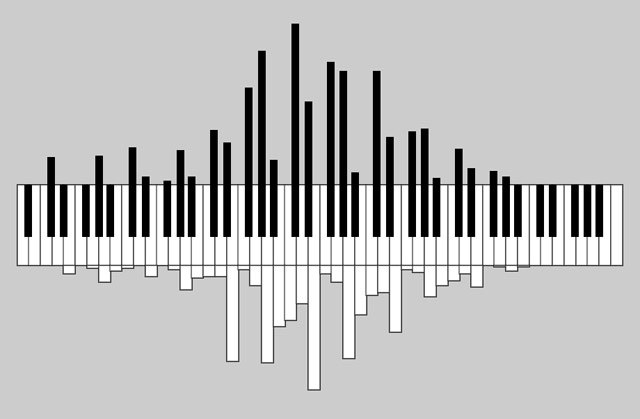Pianograms
Pianograms are visualizations of the relative distributions of piano key presses for songs. For instance, this is Prelude in C-sharp by Rachmaninov:

(via @pomeranian99)



This site is made possible by member support. 💞
Big thanks to Arcustech for hosting the site and offering amazing tech support.
When you buy through links on kottke.org, I may earn an affiliate commission. Thanks for supporting the site!
kottke.org. home of fine hypertext products since 1998.
Pianograms are visualizations of the relative distributions of piano key presses for songs. For instance, this is Prelude in C-sharp by Rachmaninov:

(via @pomeranian99)
Steinway & Sons, the celebrated piano making company, recently produced this video of how their grand pianos are constructed. Their process for building pianos has changed so little that they were able pair 1980s factory tour audio from former chairman John Steinway to contemporary footage of their Astoria, NY factory.
You can see how little has changed as you watch this 1929 film of how a Steinway piano was made:
Some of the shots in the two videos are identical, e.g. the men pulling the piano rim out of the mold or choosing spruce for the sounding boards. It interesting to compare these two videos with Wednesday’s video of how Telsa sedans are made. Together, the three form a view of the progression of automation in manufacturing. I wonder if the Tesla robots could construct a piano that sounds as good as a Steinway? (via open culture)
A company called Fandrich & Sons buys cheap grand pianos mass-produced in China, upgrades them so that they sound more like expensive hand-made European pianos, and sells them for a reasonable price.
With his higher-end grands — which the Fandrichs named “HGS” for “Holy Grail Scale” — they start with pianos built in China. He and his workers gut the piano, replacing the hammers, felt and bass strings with German and American parts. They reinforce the underbelly of the piano by installing short ribs — spruce beams between the existing main ribs.
Using a computer program designed in-house, the keys are reweighted across the board to eliminate friction and even out the response. The reweighting gives the Fandrich pianos their signature touch, one that some players have described as buttery, effortless.
In automotive terms, the Fandrichs are “trying to upgrade a Hyundai to run like a Bentley, for the price of a Honda”. (via girlhacker)
Stay Connected